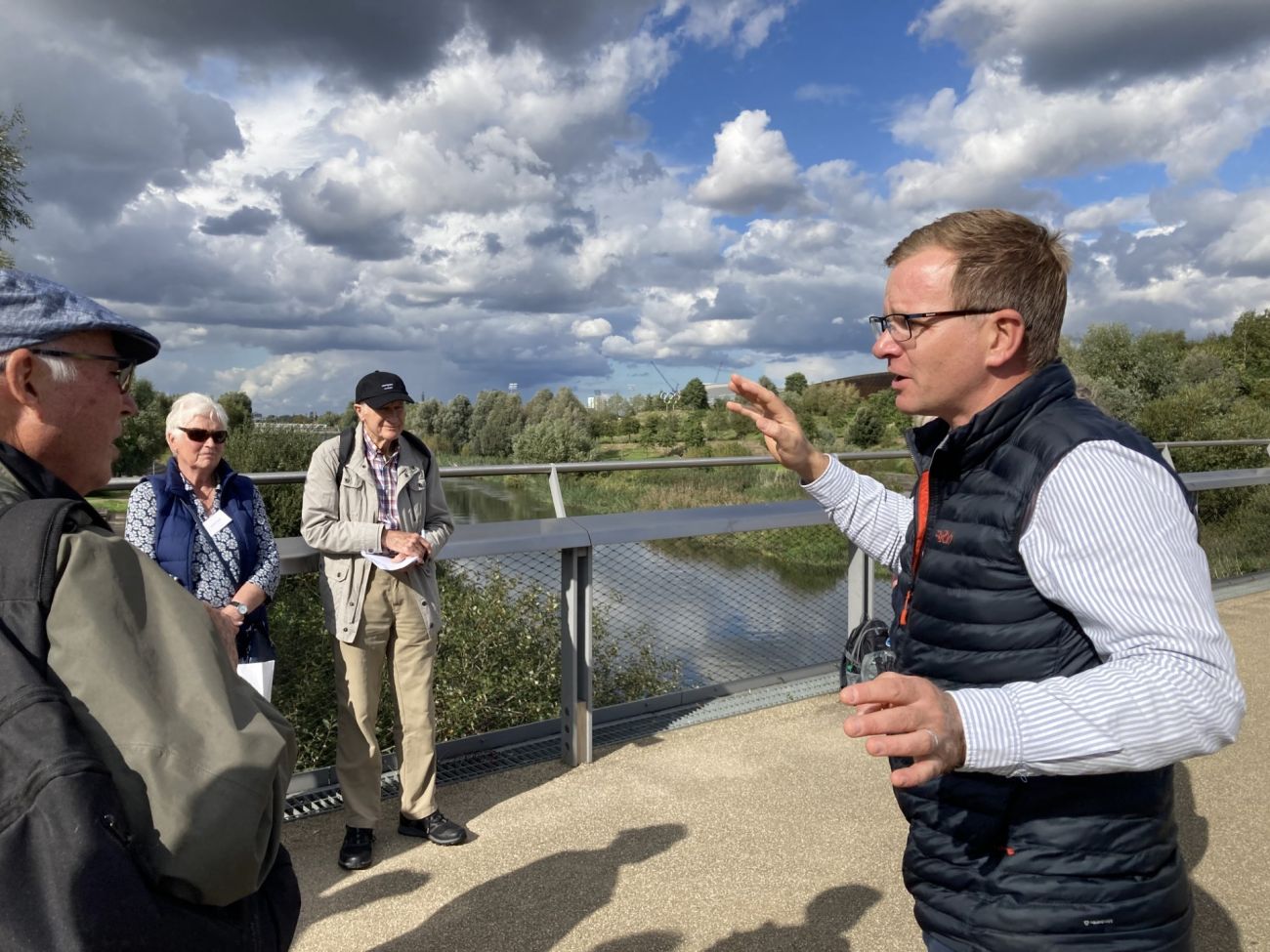Queen Elizabeth Olympic Park walking tour
Friday 22 September 2023

On a bright sunny morning, 14 of us met beside Zaha Hadid’s spectacular London Aquatics Centre. Denise Lewis introduced Alistair Bayford who then guided and talked to us for four hours. He is such an amazing man and I am sorry that this poor scribe cannot do him justice. From an early age he was destined for a career in landscape architecture. He oversaw the installation of the largest urban park in Europe for 150 years and stayed on until 2015 to ensure its ultimate success. His breadth of knowledge brought together the whole physical environment and the effect on local communities.
The sloping site above the River Lea consists largely of herbaceous terraces, wide paths, full size trees and wild borders by the river. He started with a brownfield contaminated site, a shallow depth of ‘soil’ (crushed rubble and recovered soil, very porous) and a staff of 50, some with no plant knowledge. Plant selection for the various geographical areas was down to trial and error; mature trees had to be assisted by using gator bags (designed for slow-release watering) to drip feed seaweed fertiliser.


Many compromises were involved in having the gardens at their peak for the Olympics: tress planted too close together and plants flowering out of season. Since his departure in 2015 the number of gardeners has been halved and much of their time is now spent on general maintenance tasks. The result is a considerable reduction in the number of species with diascias disappearing and salvias taking over from the Piet Udolf grasses. One method of preventing this has been to remove all the top growth in Feb/March in an attempt to replicate the wild, where grazing retains the diversity. Climate change is affecting many of the plants and trees with some fruiting twice in a year.


After lunch at a Dutch barge just outside the park we re-entered the North Park where a 30-year development includes children’s play areas and river bed renewal which has already resulted in improved water quality and wild life recovery.
The Blossom Garden, recently created in memory of lives lost to Covid and to those who saved so many, is a haven of peace and a fitting tribute. Ultimately what will remain in the mind is the awesome scale of the achievement in the hands of a very special man.
Text: Charles Smith
Images: Denise Lewis


